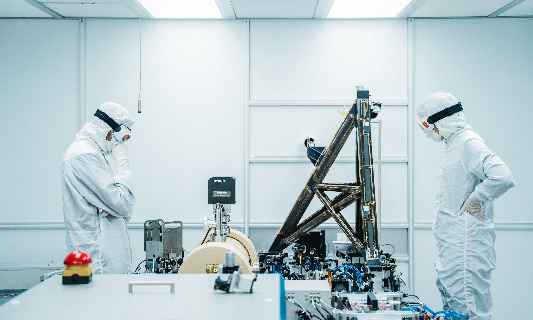Atmospheric and Space Scientist
Who Is An Atmospheric and Space Scientist?
An Atmospheric Scientist studies and researches about the physical characteristics and motions of the atmosphere to prepare reports and forecasts based on the analyses of weather and climate. For example, you will measure the temperature, air pressure and various other properties of the atmosphere to predict the climatic changes.
Roles & Responsibilities
Investigating atmospheric phenomena based on data collected by air stations, satellites and radars. You will forecast weather conditions based on the climatic information captured by satellites.
Preparing reports and forecasts on atmospheric phenomena for public use. For instance, you will use data received from satellites to forecasts when the next meteor shower will take place.
Interpreting data, reports, weather maps, photographs of the atmosphere and outer space to predict weather conditions.
Measuring wind, temperature, and humidity in the upper atmosphere with the help of weather balloons.
Designing and developing new methods and equipment for meteorological data collection and other applications.
Operating computer graphic equipment to develop and create weather reports and maps to be used for weather broadcasts.
Take the Mentoria career assessment test, to find out how well-suited you are as an Atmospheric Scientist.
Discover your Ideal future
Get expert guidance and mentorship towards your perfect fit.
What Skills Will I Need To Have To Do This Job Well?
As exciting as this sounds, there are some things you’ll need to learn to do the job right:
ANALYTICAL SKILLS
As an Atmospheric Scientist, you will need to study and analyse the data received from satellites and weather stations and use them for weather forecasts or other predictions.
RESEARCH SKILLS
You should have the ability to study in depth the different weather conditions or atmospheric phenomena to make accurate predictions or to better understand the climate.
TECHNOLOGICAL SKILLS
Your technological skills and interest have to be high with the amount of it you will have to work with tracking and analysing data.
DATA COLLECTION SKILLS
You should be able to gather data from various sources like upper-air stations, satellites, radars to be able to use it for meteorological reports or weather forecasts.
What Will My Workplace Look Like?
Your work life will vary severely, depending on where you work, your role and the scale of your job.
You will be working in a weather station found in airports, cities and also in isolated and remote areas. Some atmospheric scientists also work from the actual place of data capture. As a weather forecaster, you could be working for a radio or television station. You might also be working for consulting firms, analysing and monitoring emissions to enhance air quality or work with scientists or engineers and travel as part of fieldwork. You could also find work in the meteorological departments of governments or teach at universities.
What Is My Scope For Career Growth As An Atmospheric Scientist?
Your career graph would depend on the kind of work you are involved with. Atmospheric scientists who make weather forecasts work with meteorologists to depict weather conditions. Climatologists study weather variations over a long period of time. Physical meteorologists look into the chemical and physical properties of the atmosphere while Environmental meteorologists evaluate these issues and frame reports.
You could be working in small weather offices or for private consulting firms that work on assessing the air quality emissions.
There could be travel involved as you might have to head to different parts of the world to collect information and data.You will be expected to work round-the-clock and even at odd hours.
Thinking of a career as an Atmospheric Scientist? Take the Mentoria assessment test & talk to our career counsellors to get personalized step-by-step guidance for your future career path.
How Much Will I Get Paid?
The exact number will depend on where you’re working, your education, skill set and internship experience if any. We can give you a general idea.
At an entry-level position, you can expect Rs 7,00,000 annually in India and with experience and additional qualifications and certifications you can expect the salary to rise considerably.
Okay, I'm sold. This is amazing

STEP 1: Class XI-XII/Junior College
Choose Science stream after Class 10.

STEP 2: Graduate Degree
Get a Bachelor’s of Science Degree in Space Science or Bachelor of Science in Earth and Space Science.

STEP 3: Post-Graduate
Get a Master’s degree or doctorate in atmospheric science. Those of you looking to teach space science should get a Bachelor’s, Master’s, or a Doctoral degree in education and space science.

STEP 4: Land a Job
After completing your education you can join a weather office, meteorological department, join NASA and similar organisations. .
Congratulations, you are now officially an Atmospheric Scientist!
Sign Up for Mentoria - India’s Most Reliable Career Discovery Platform
Mentoria promises to handhold you during your career discovery journey - from the time you sign up until you get into a career you love.
Discover your Ideal future
Get expert guidance and mentorship towards your perfect fit.


